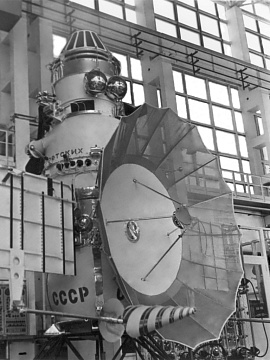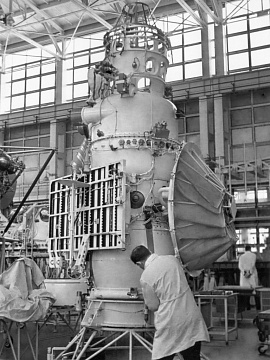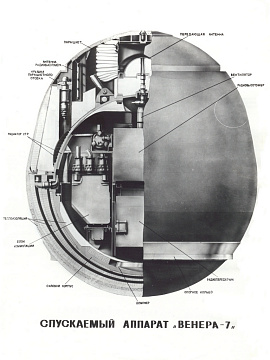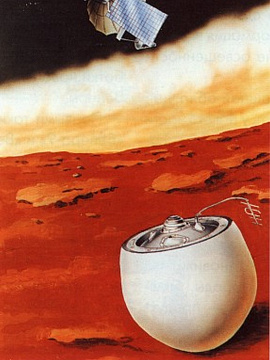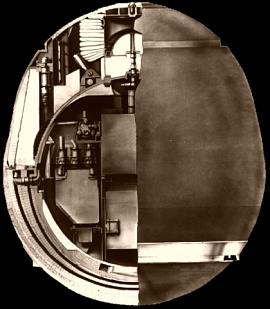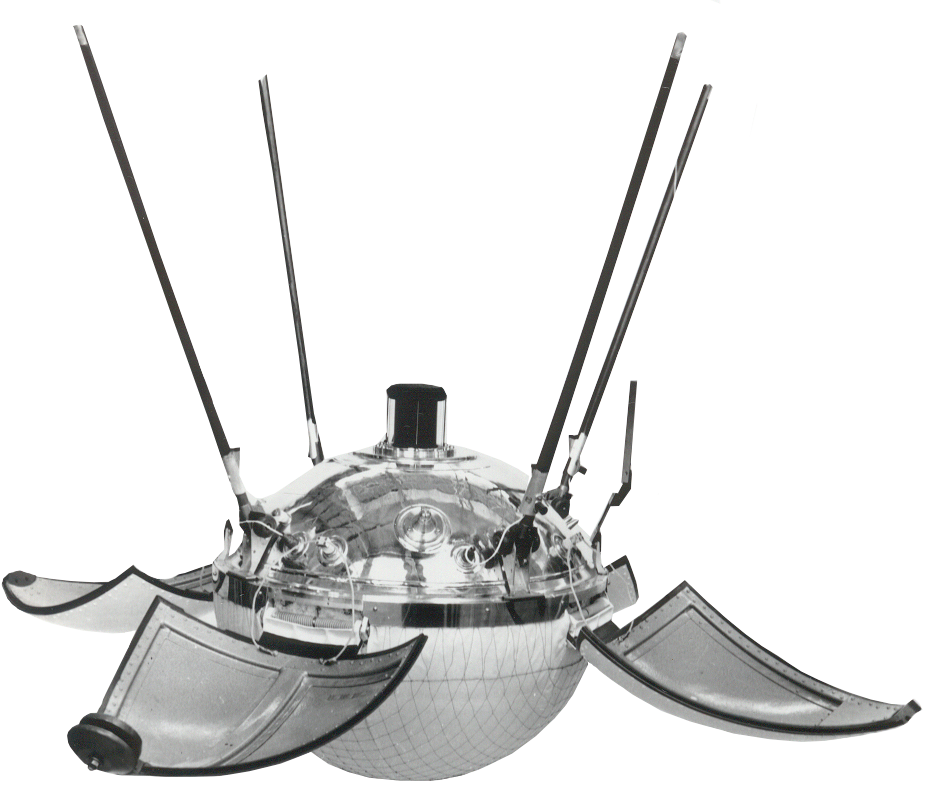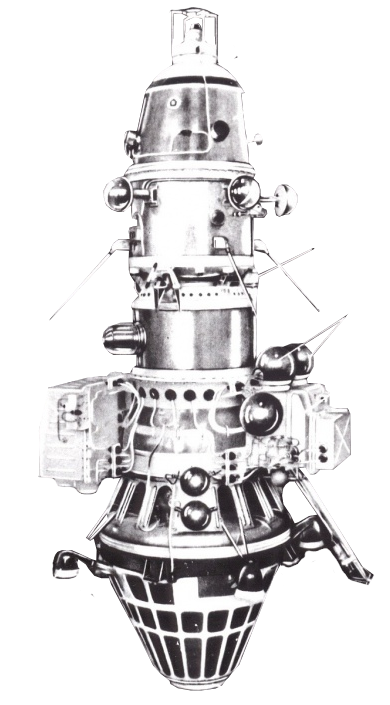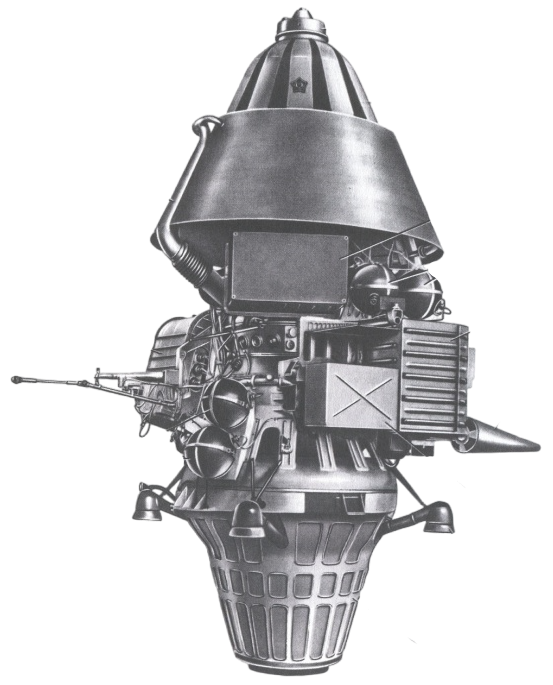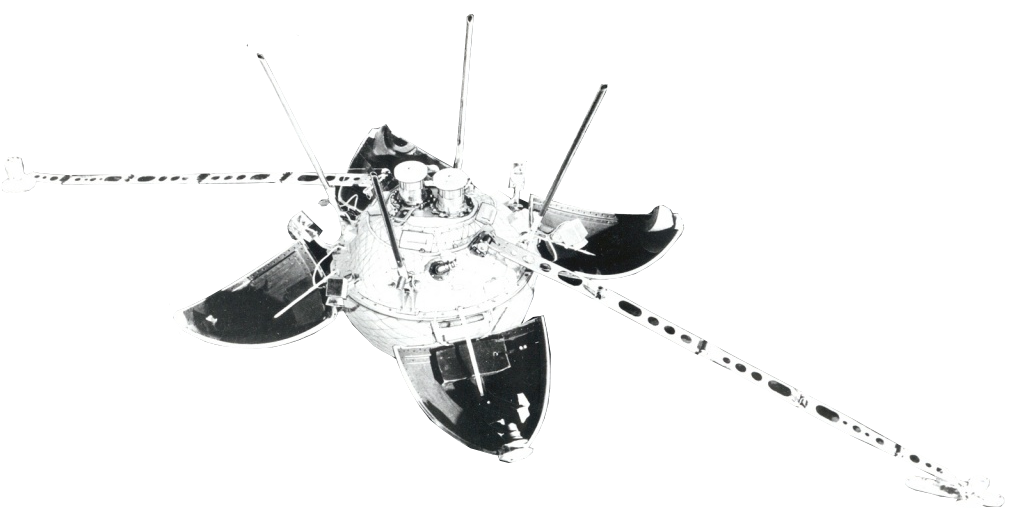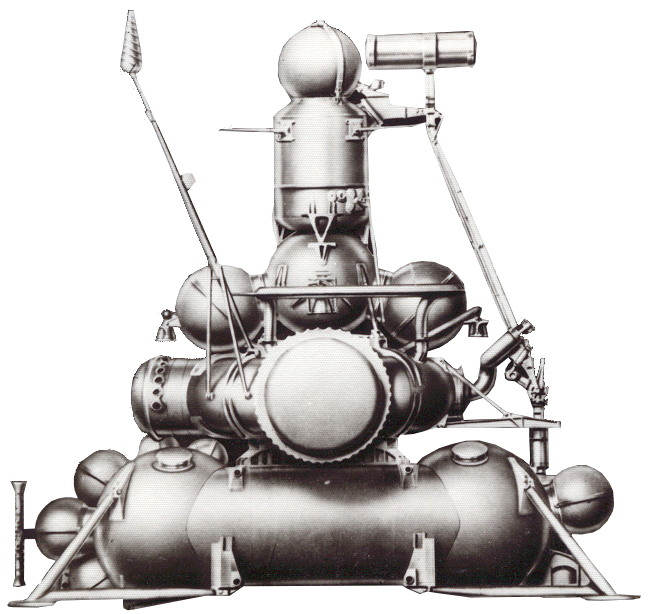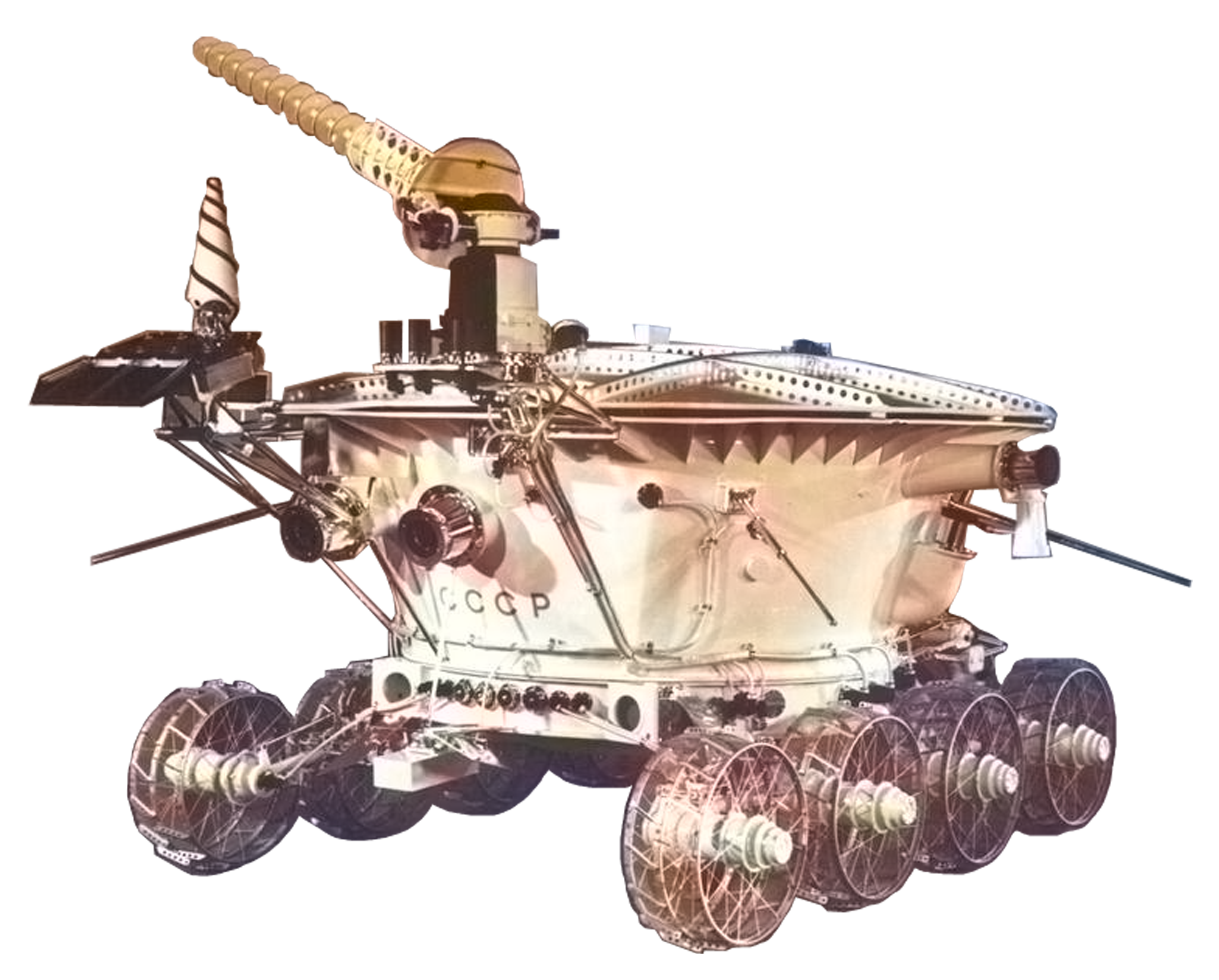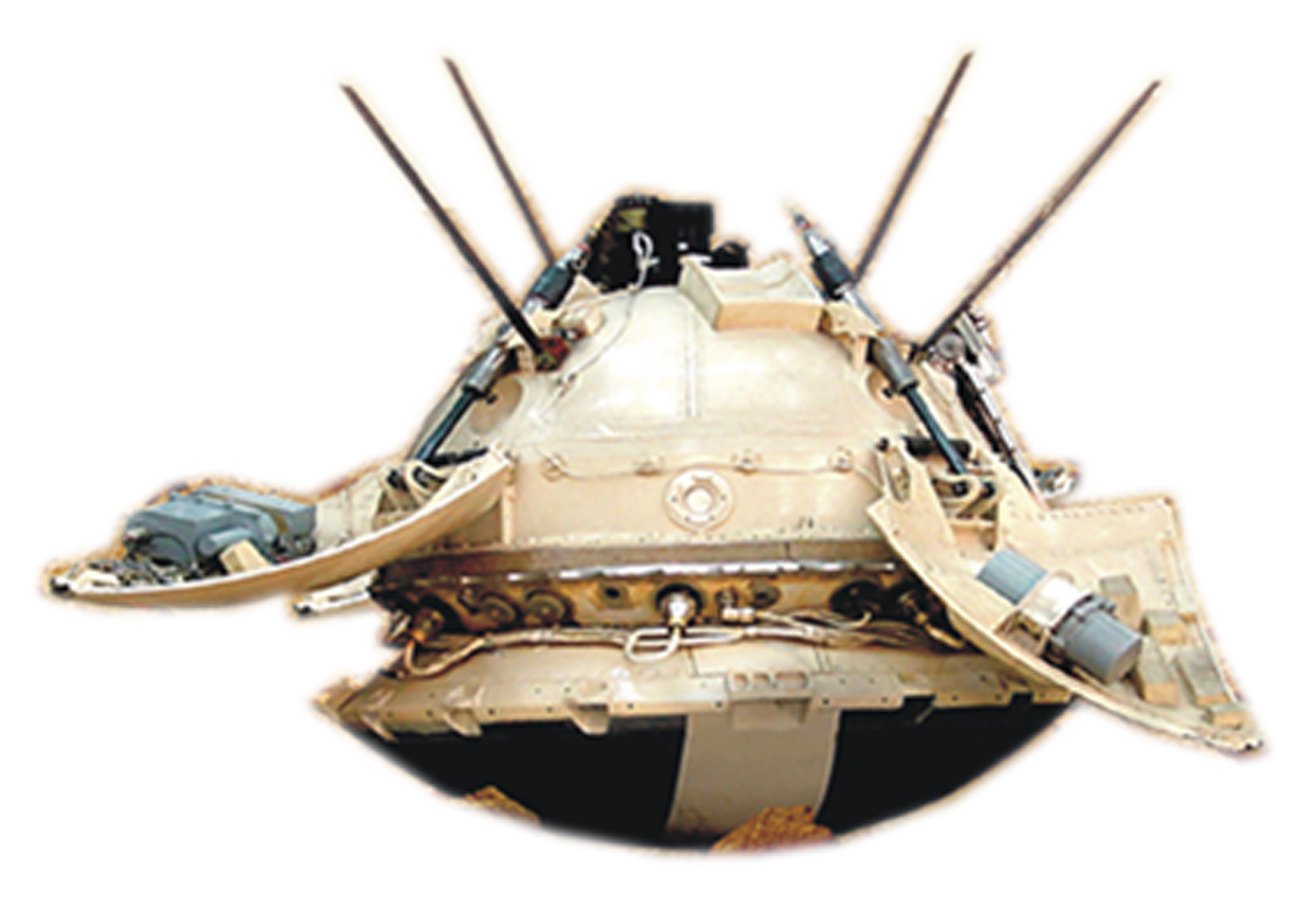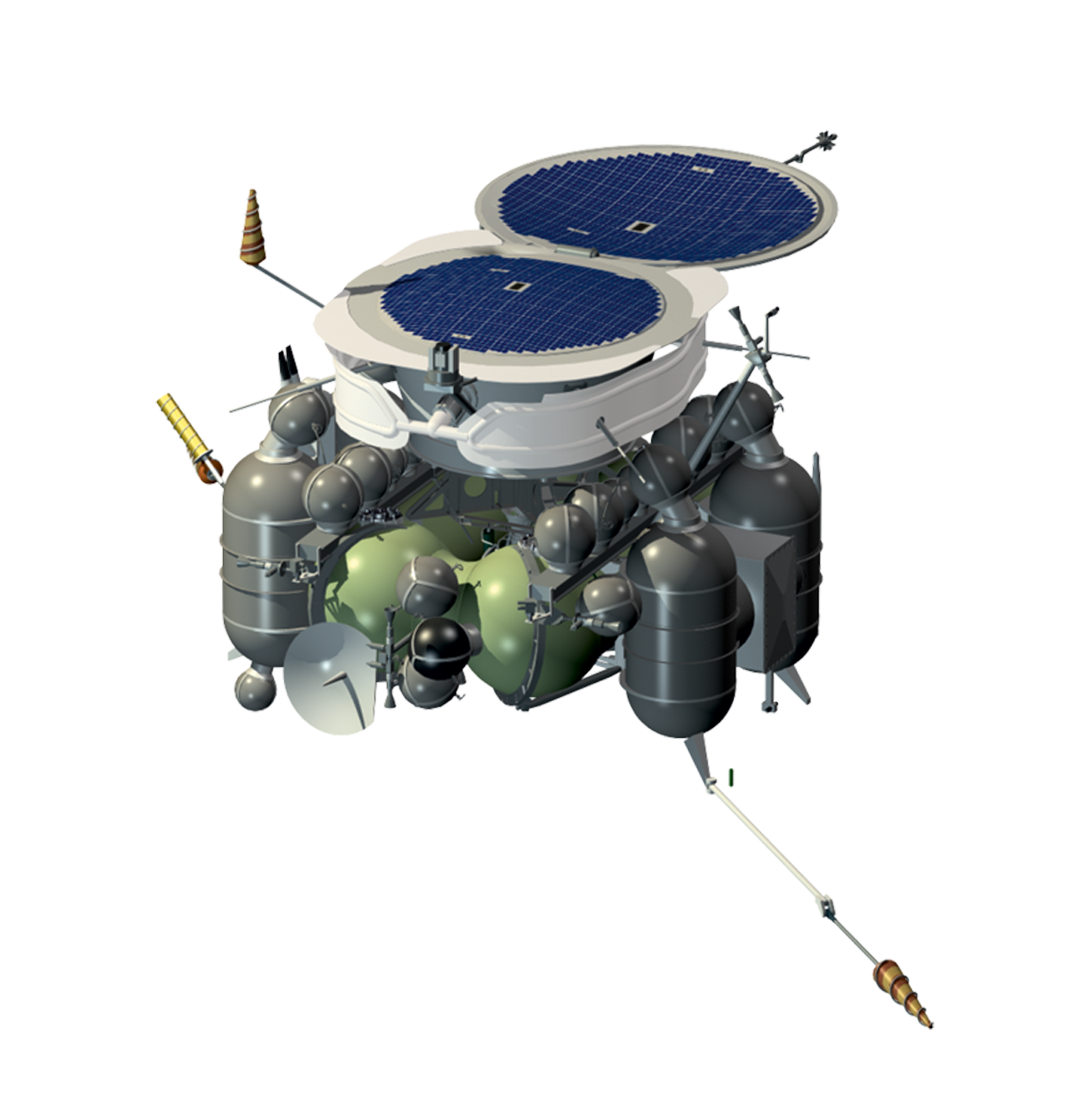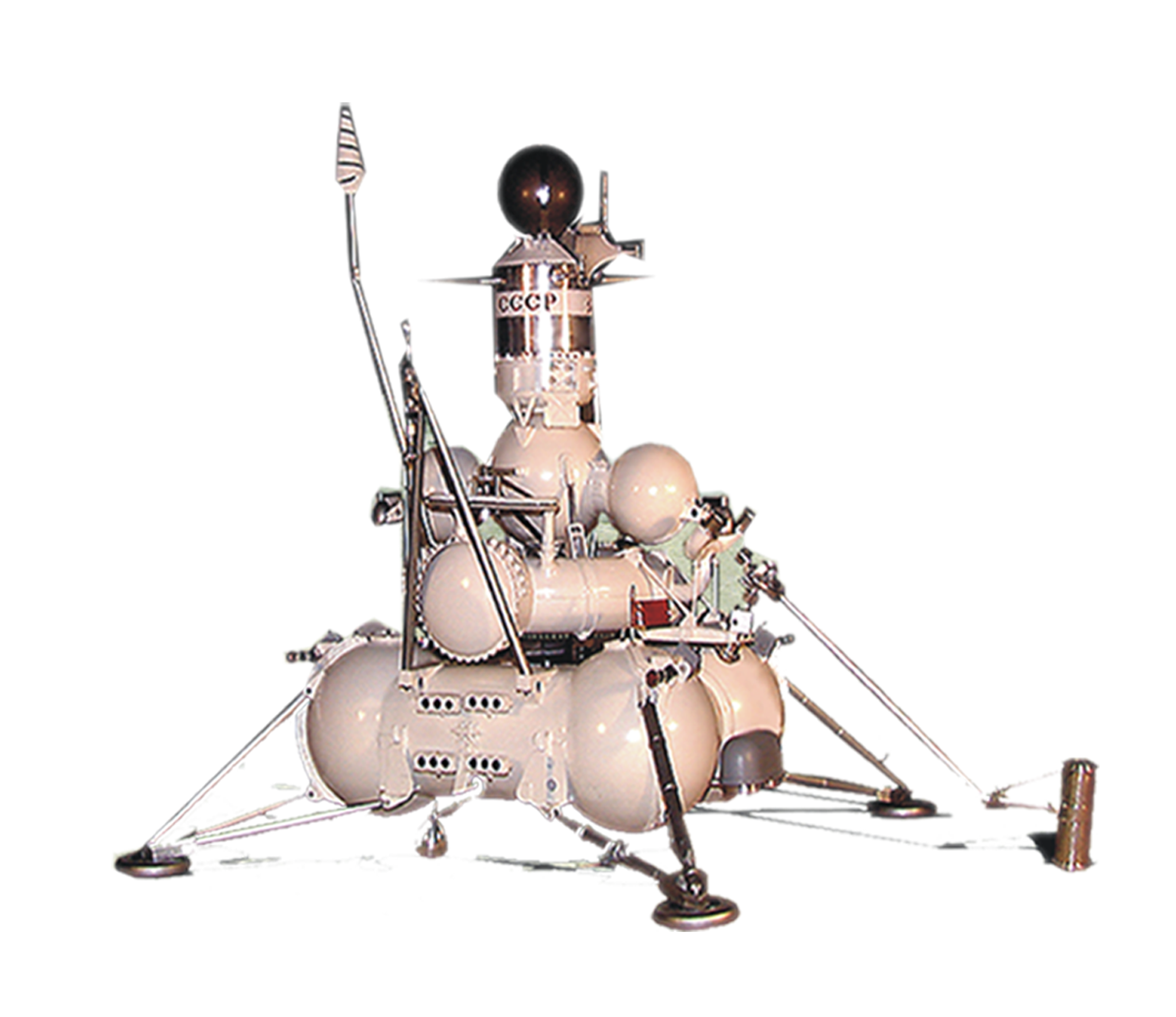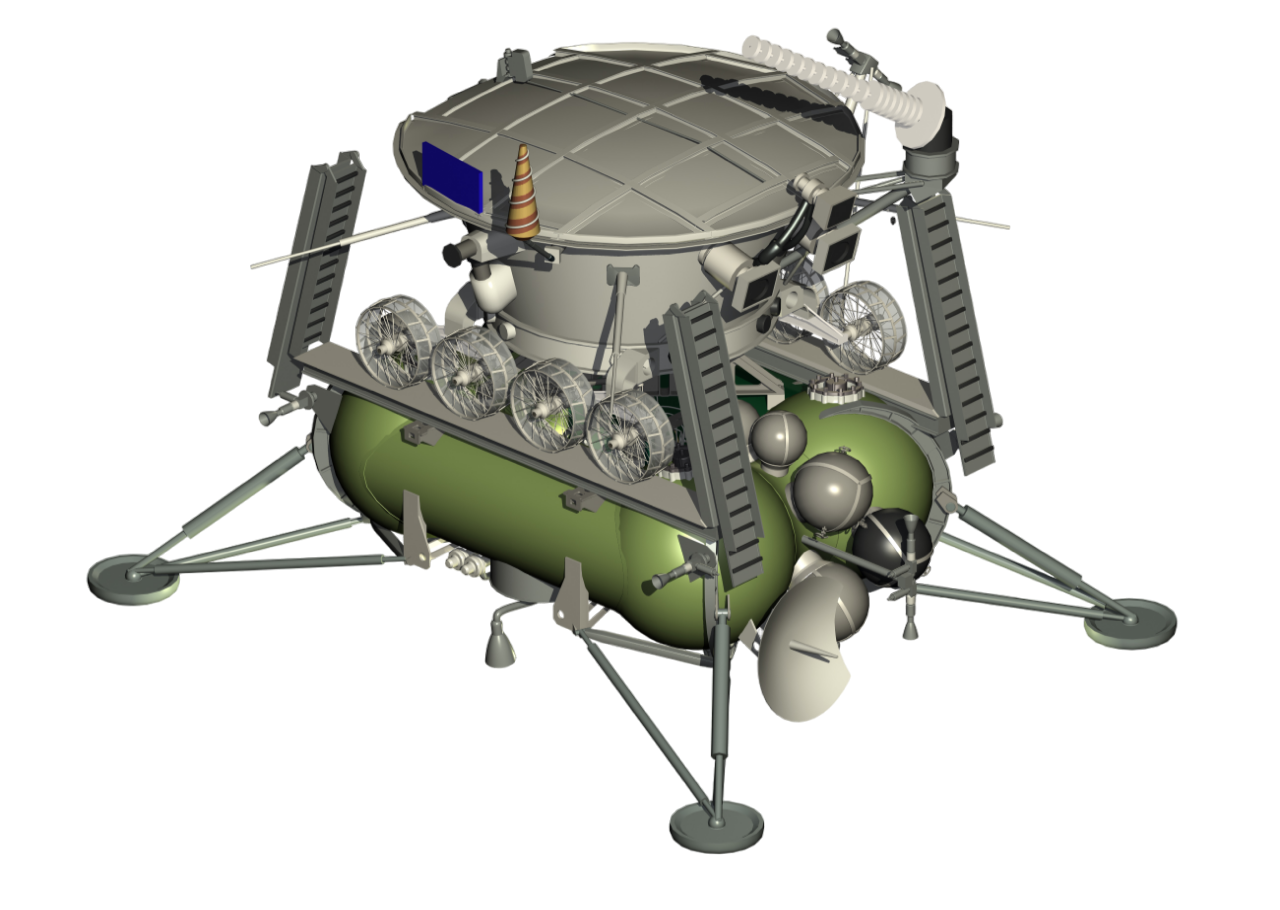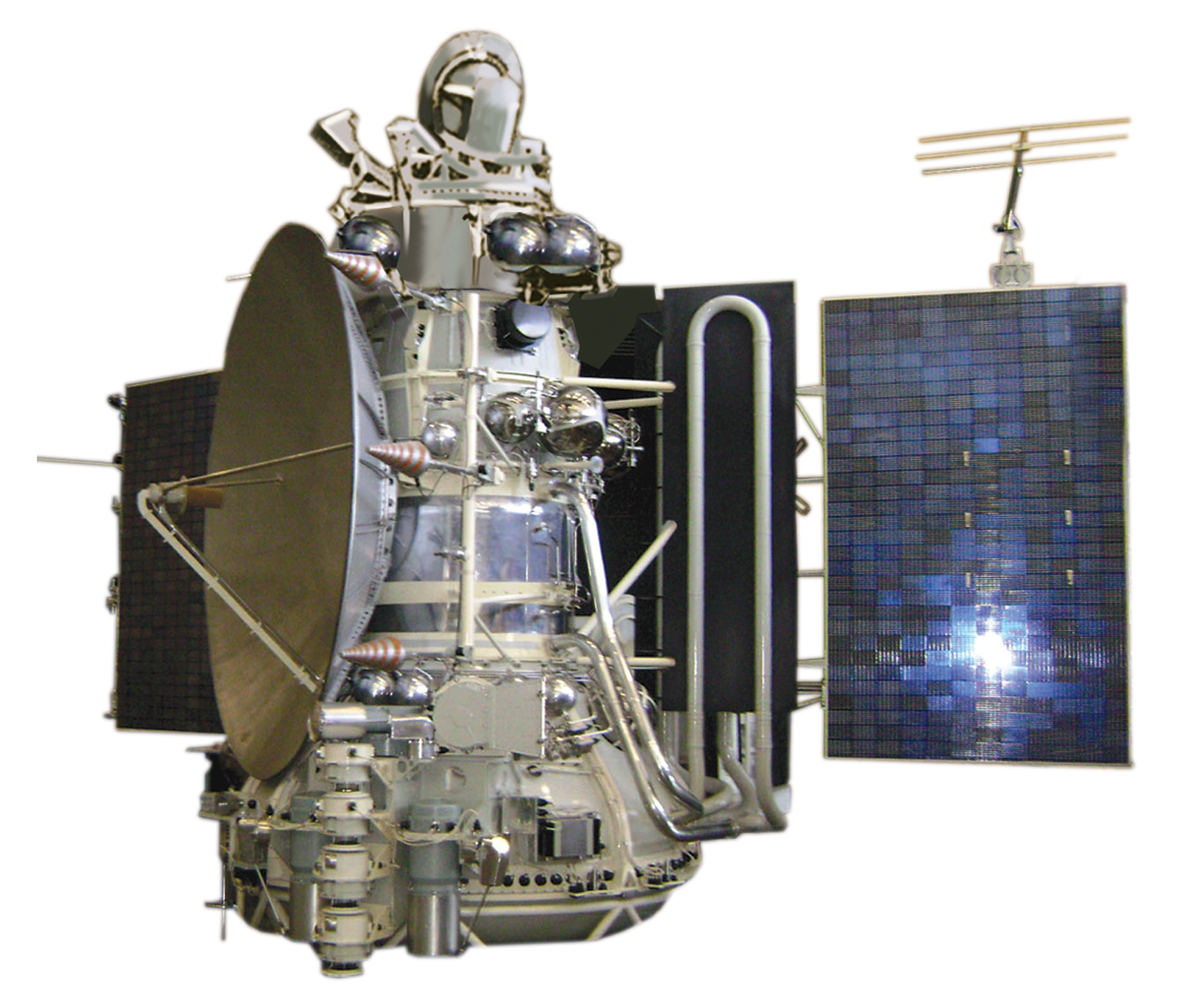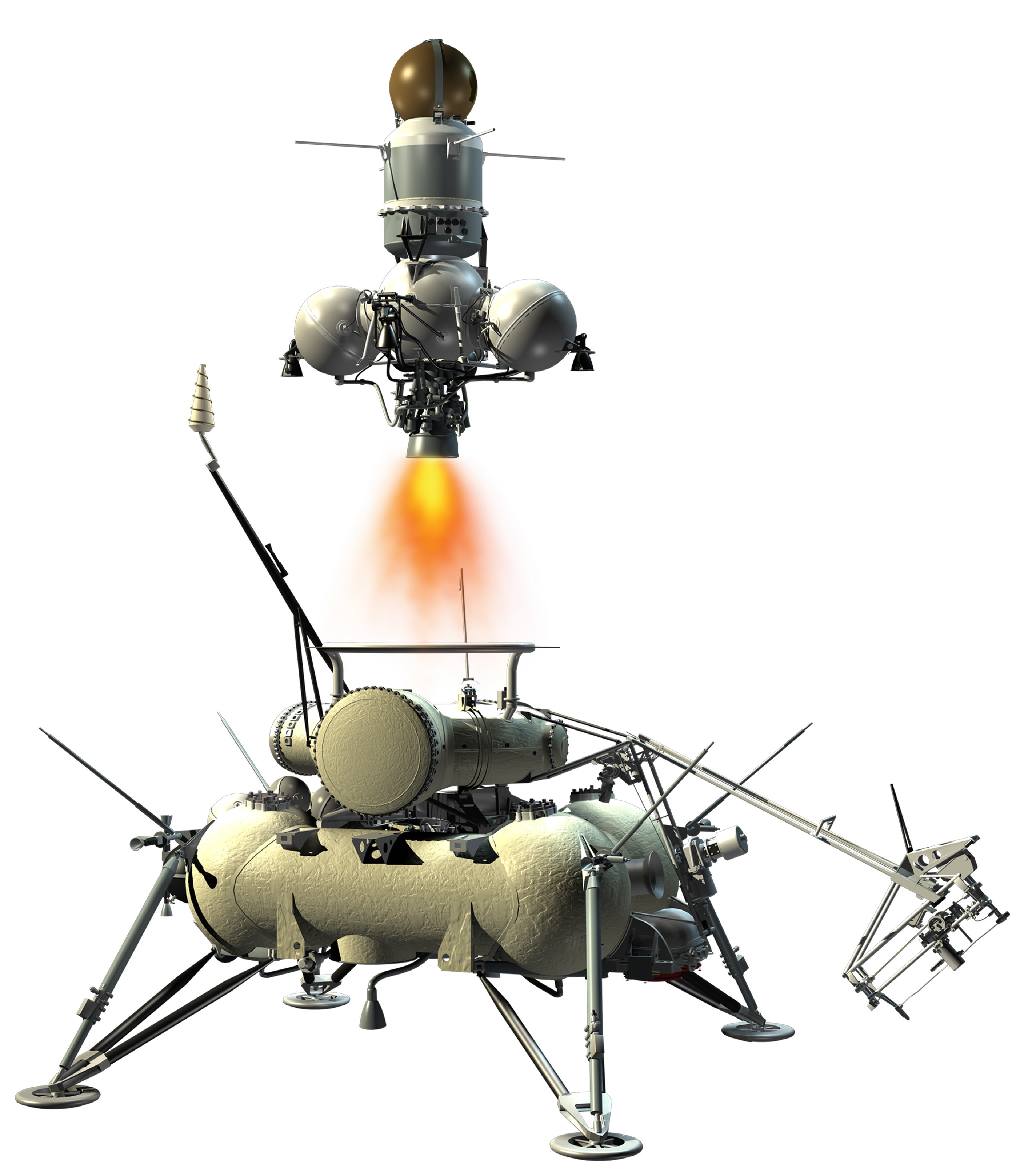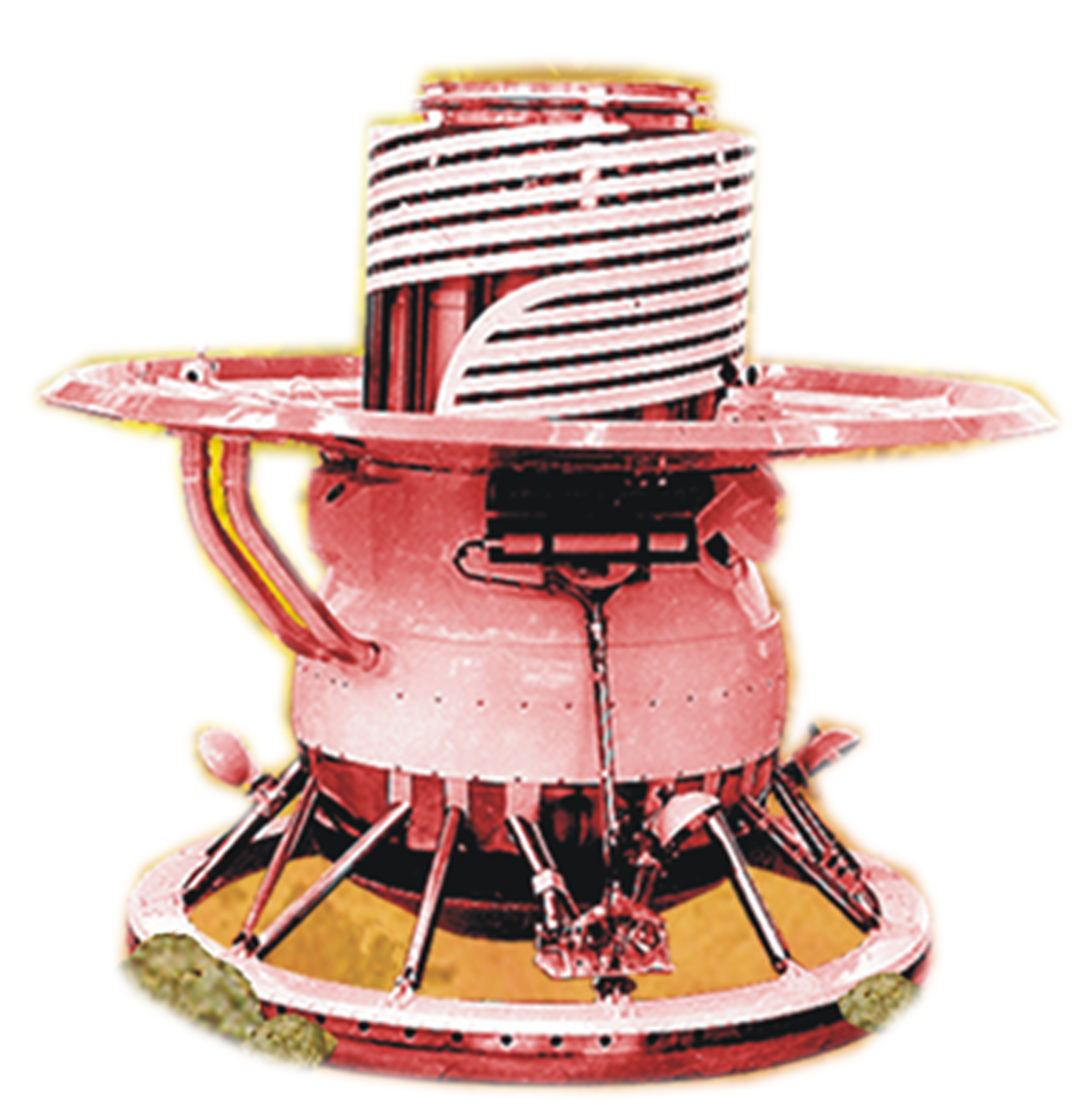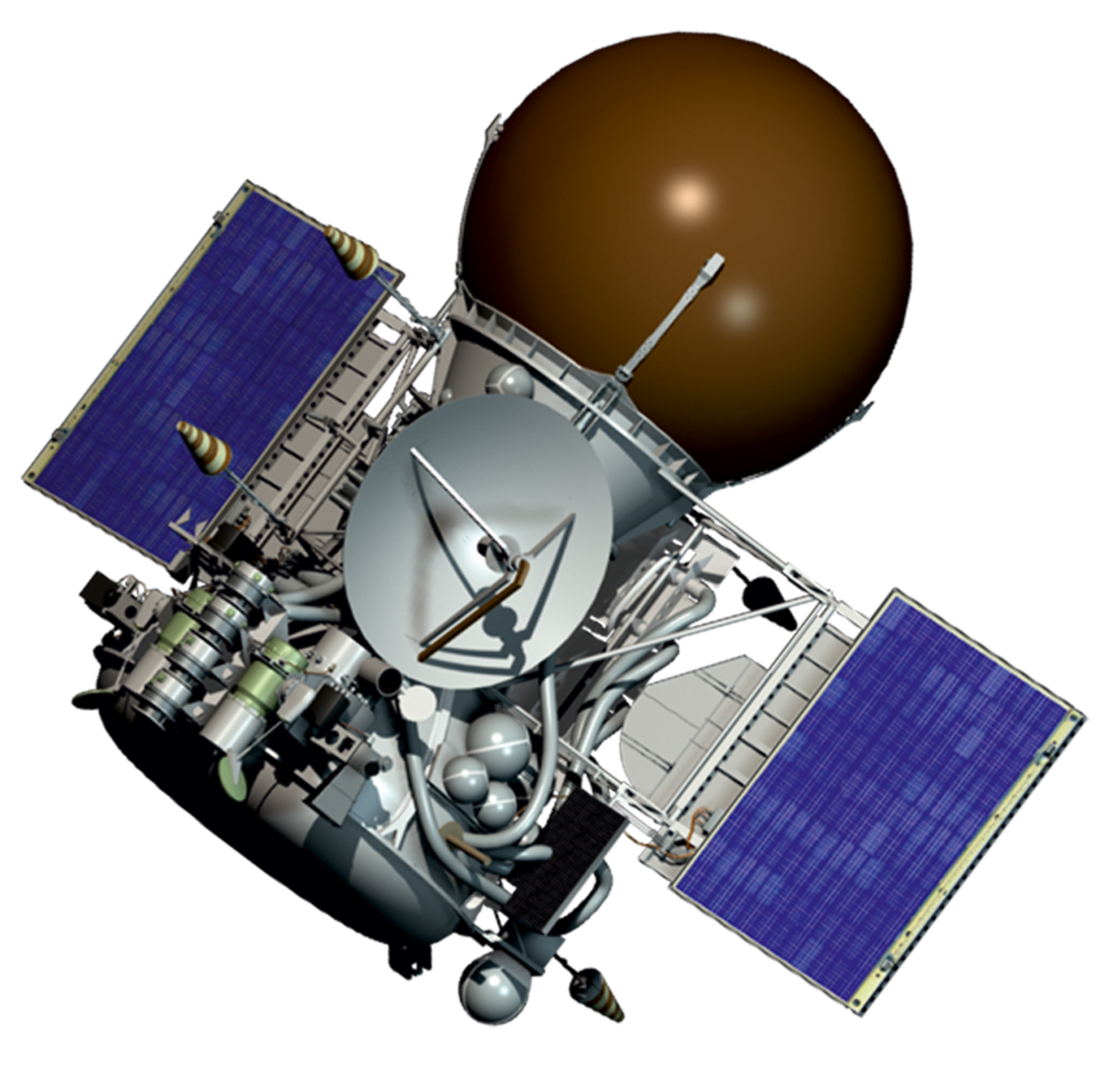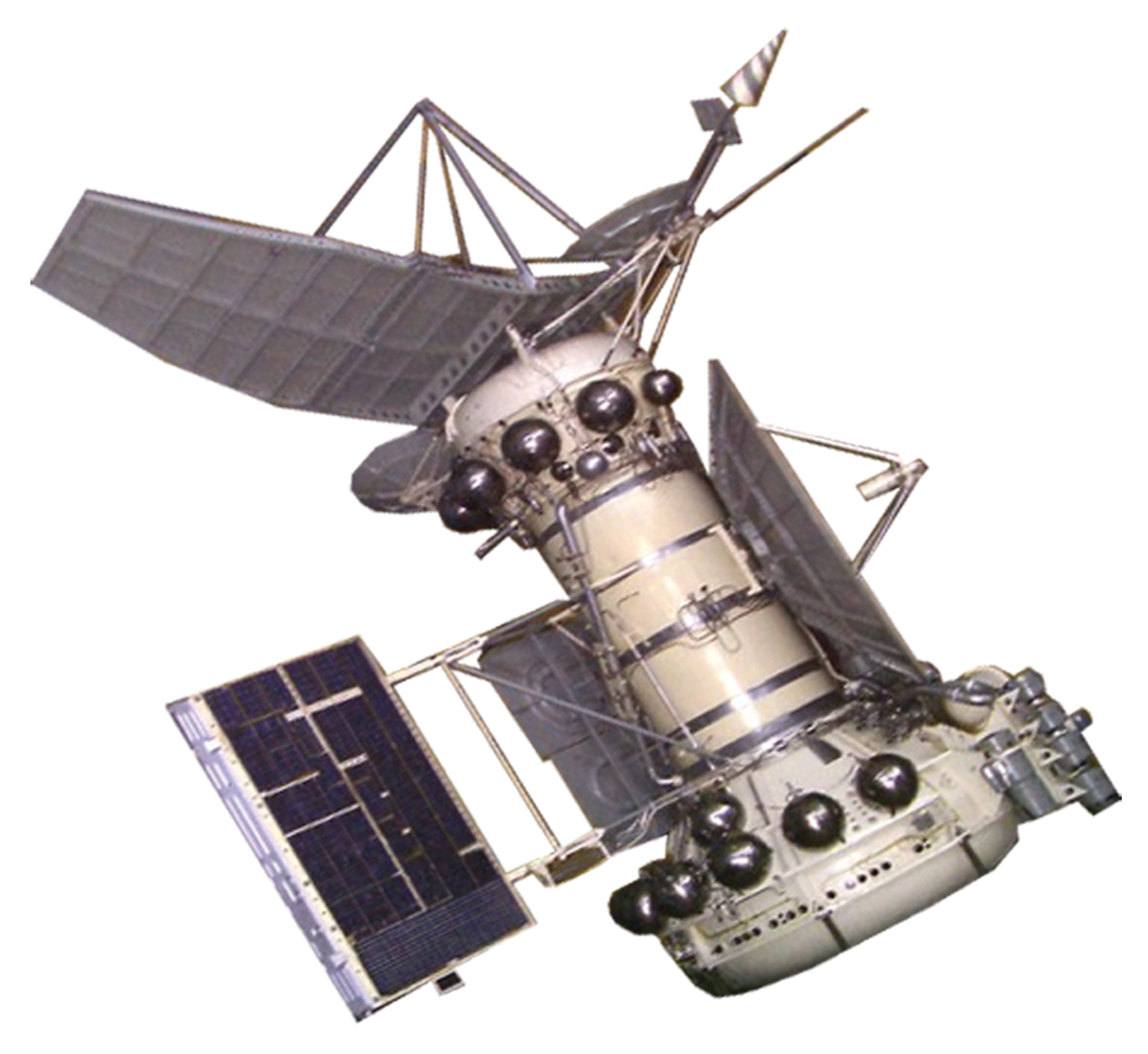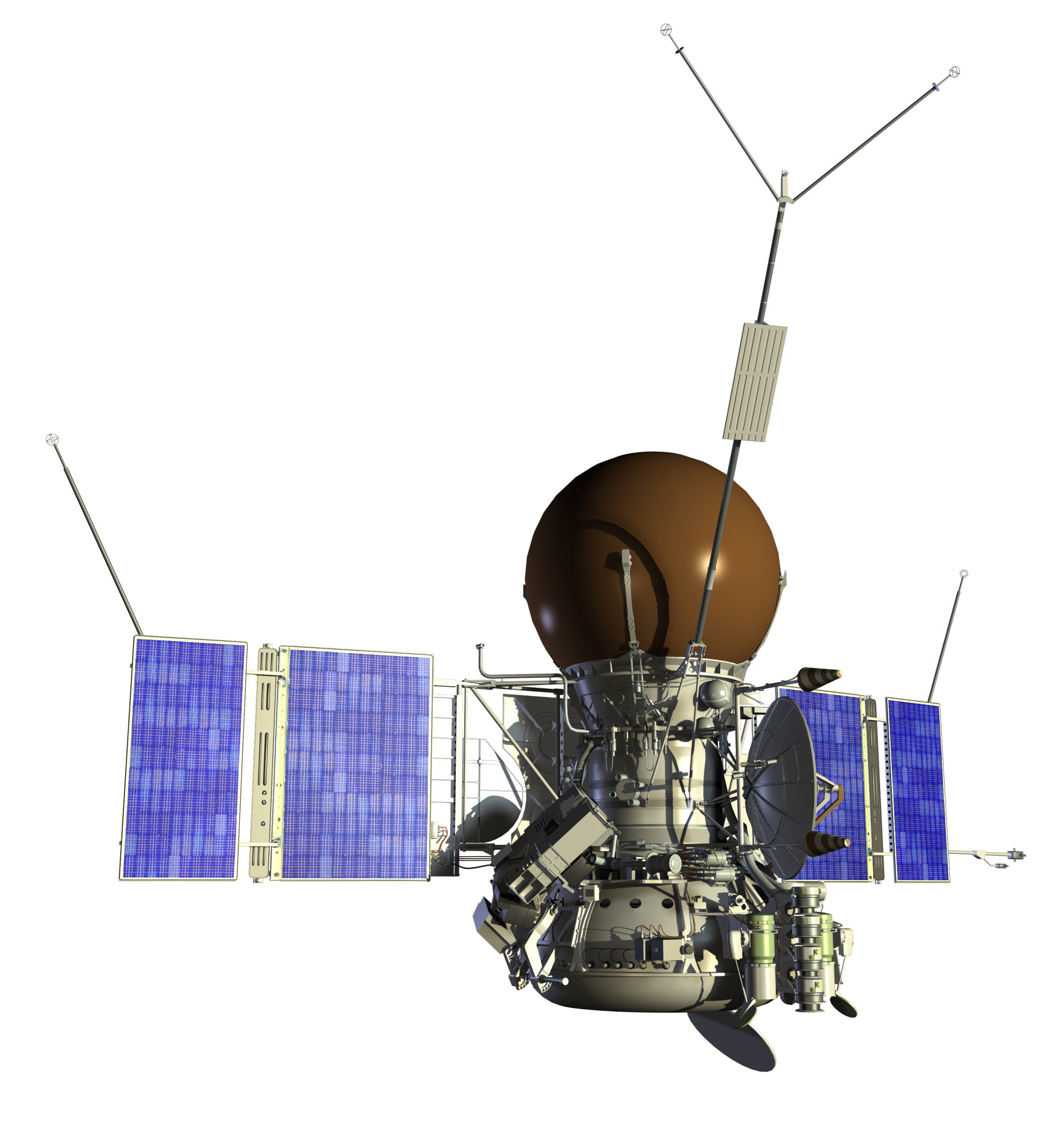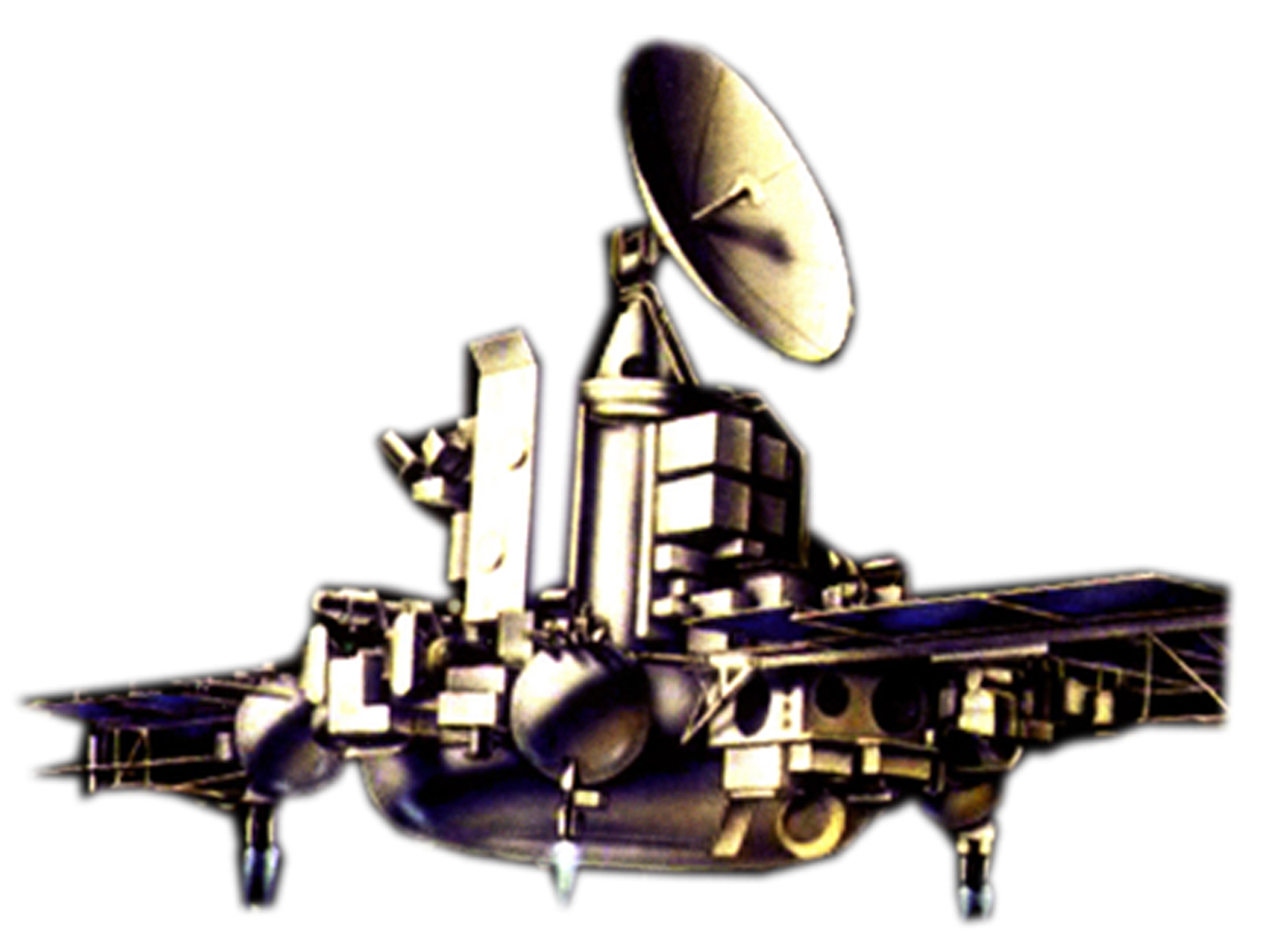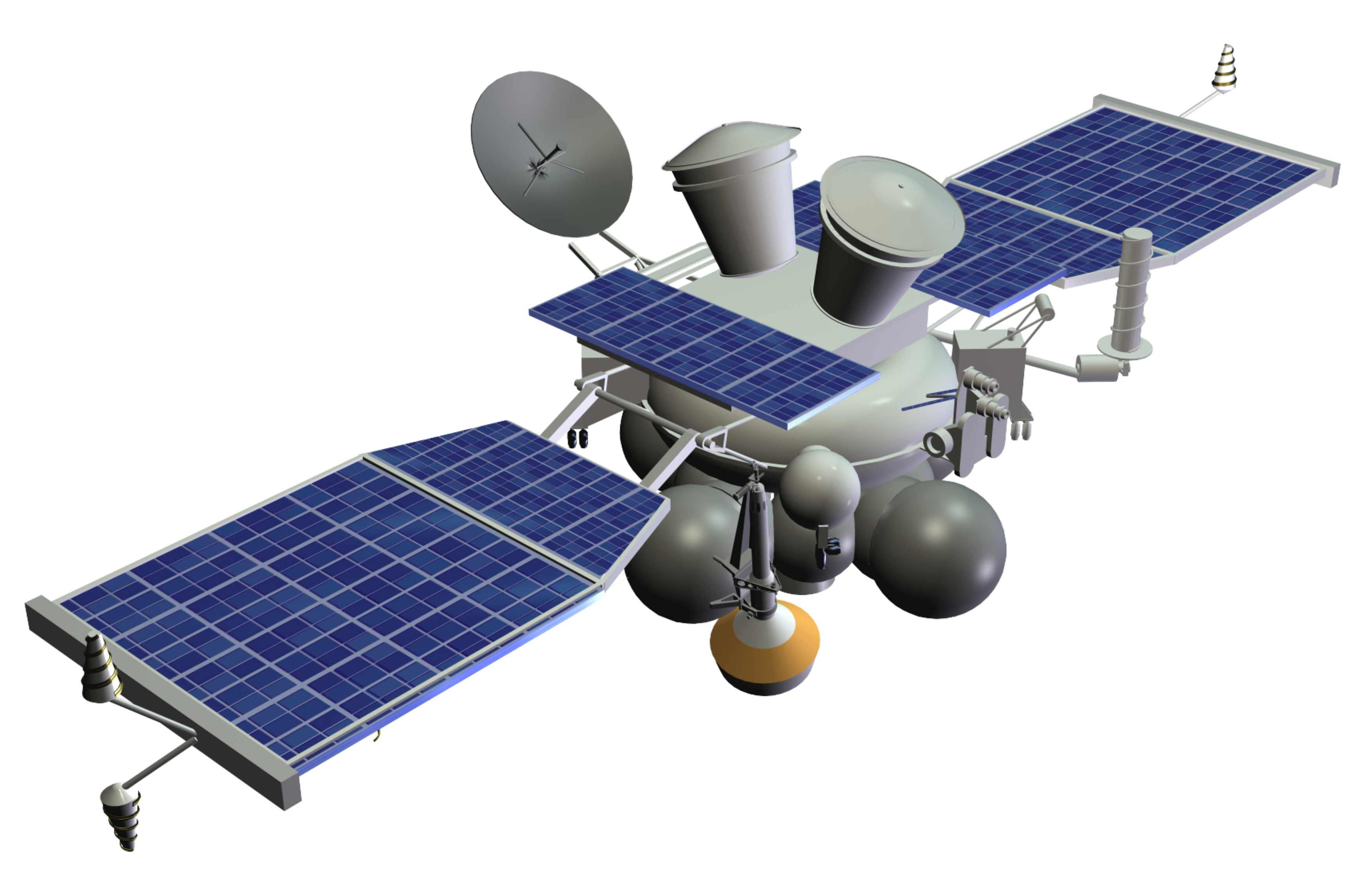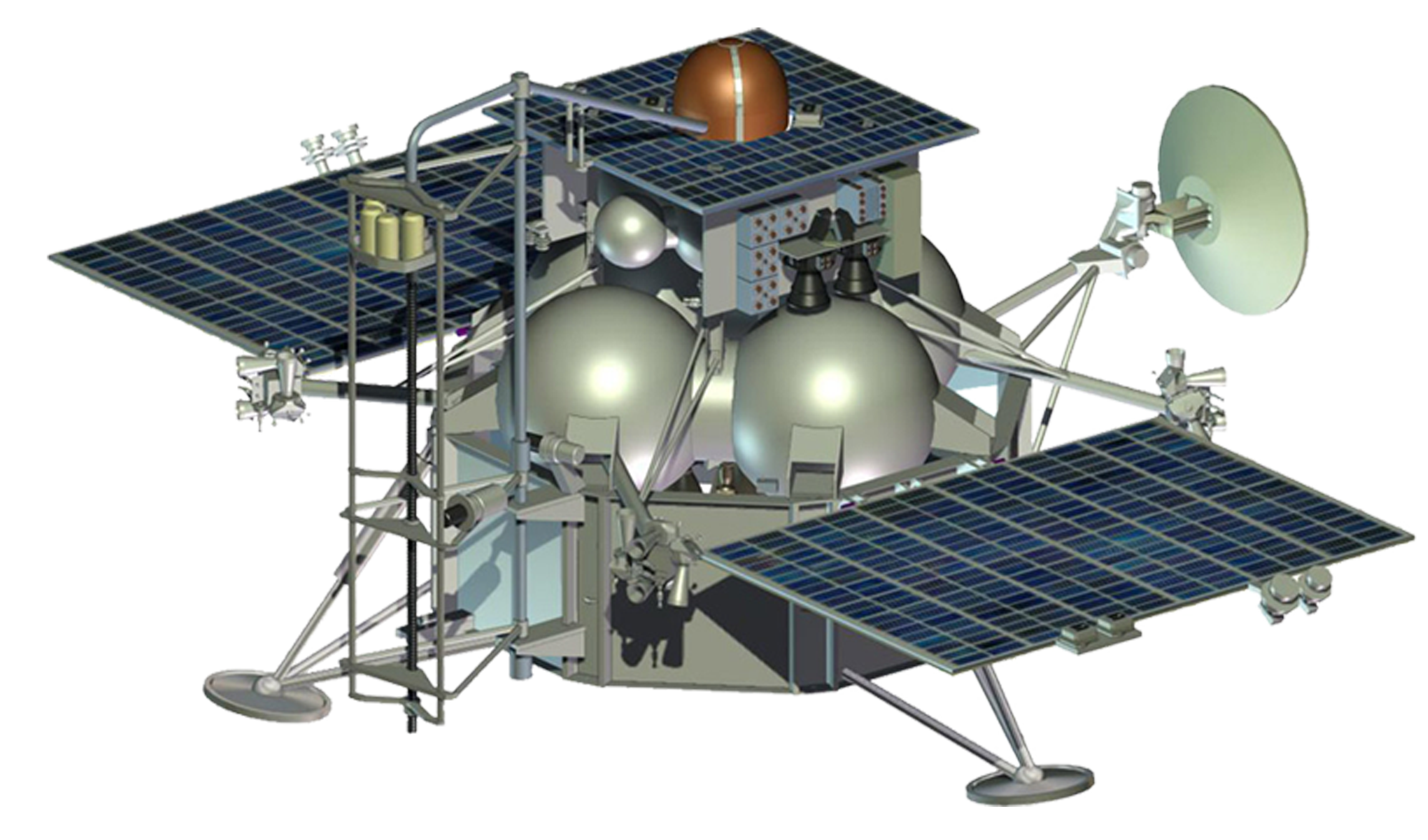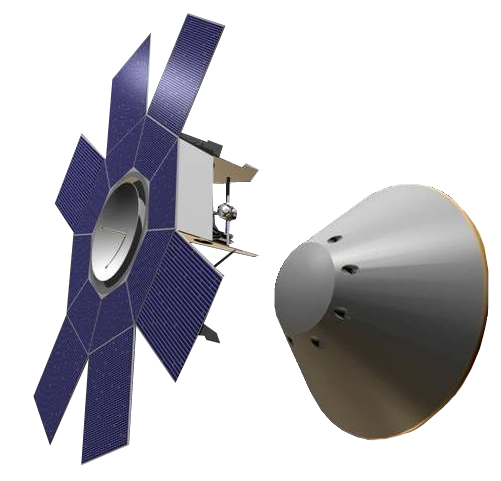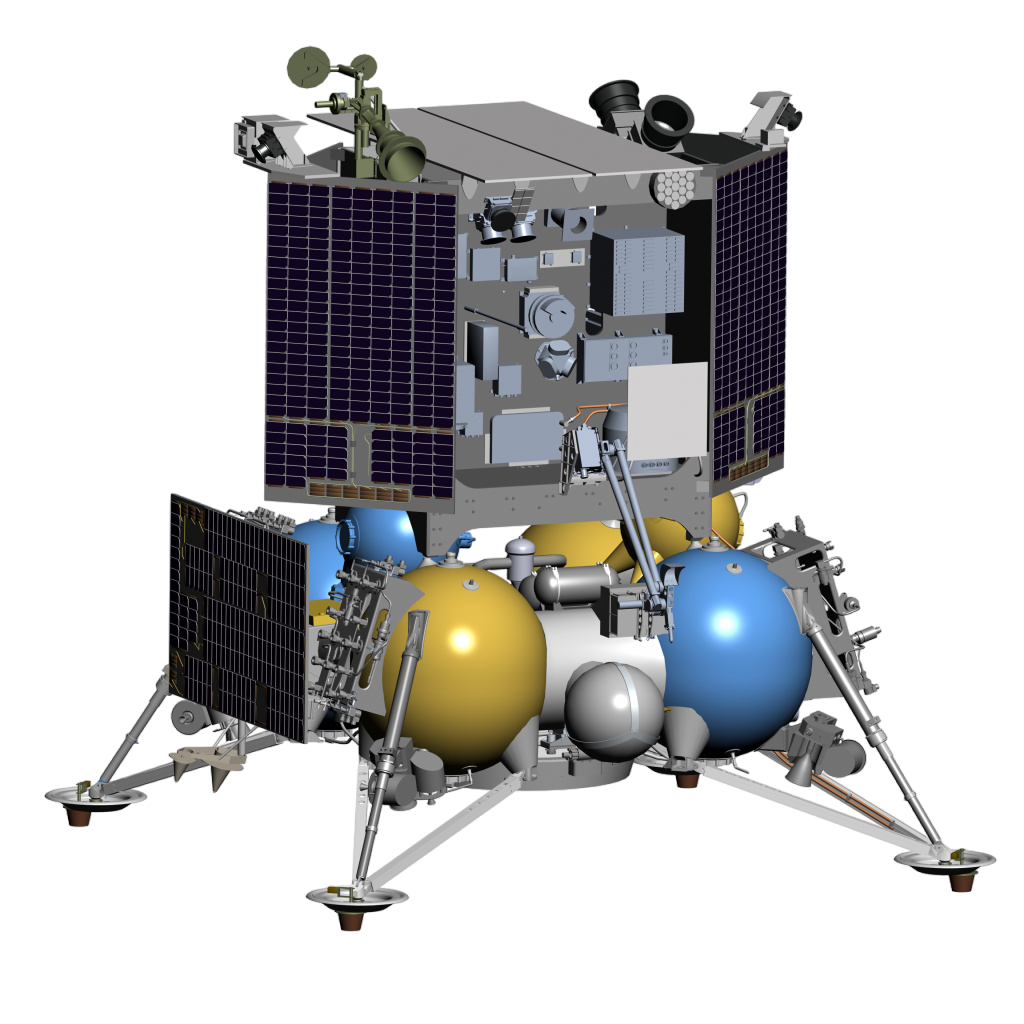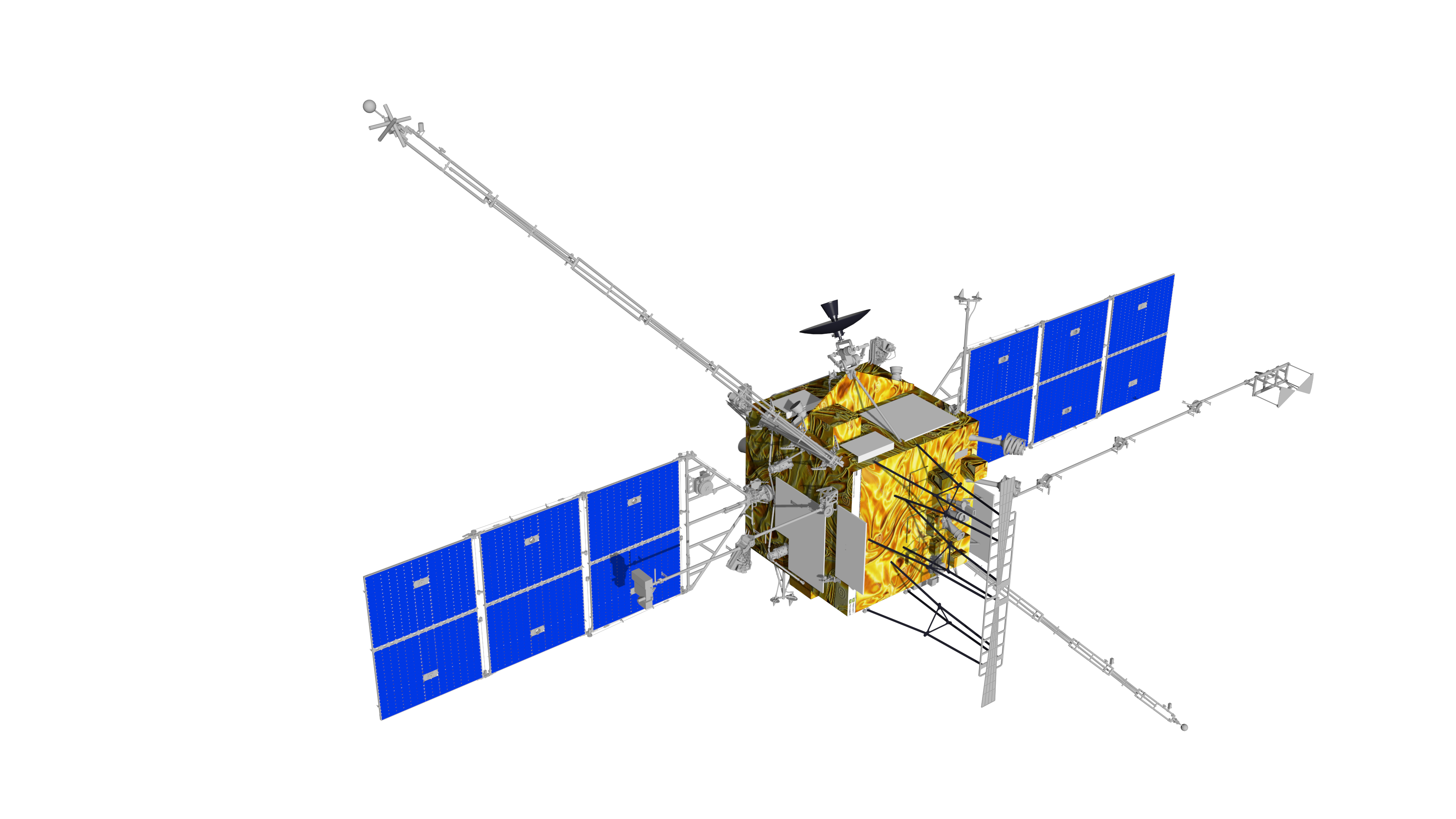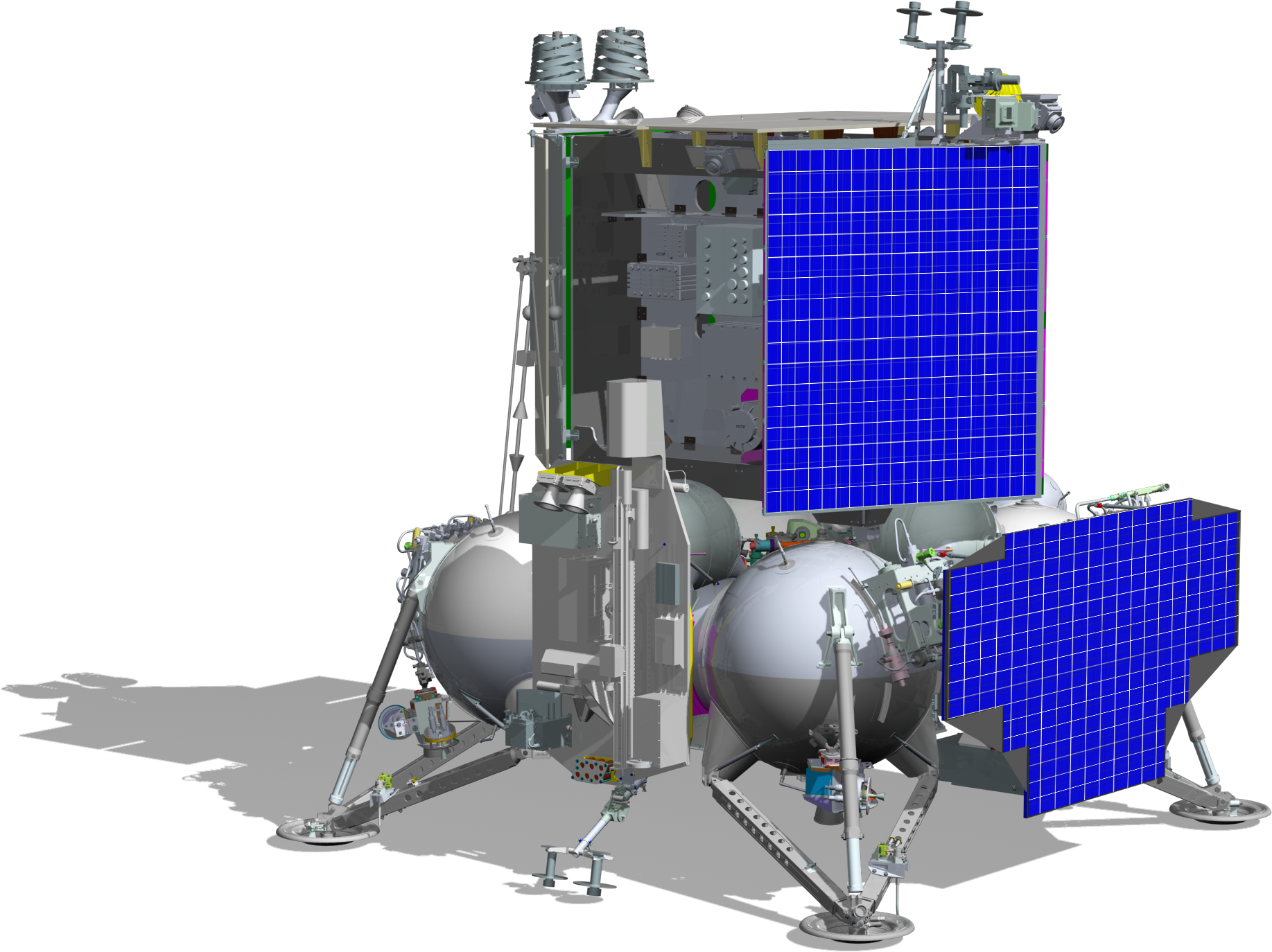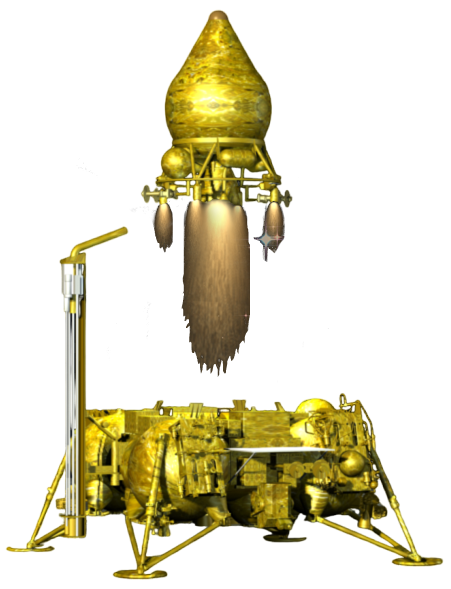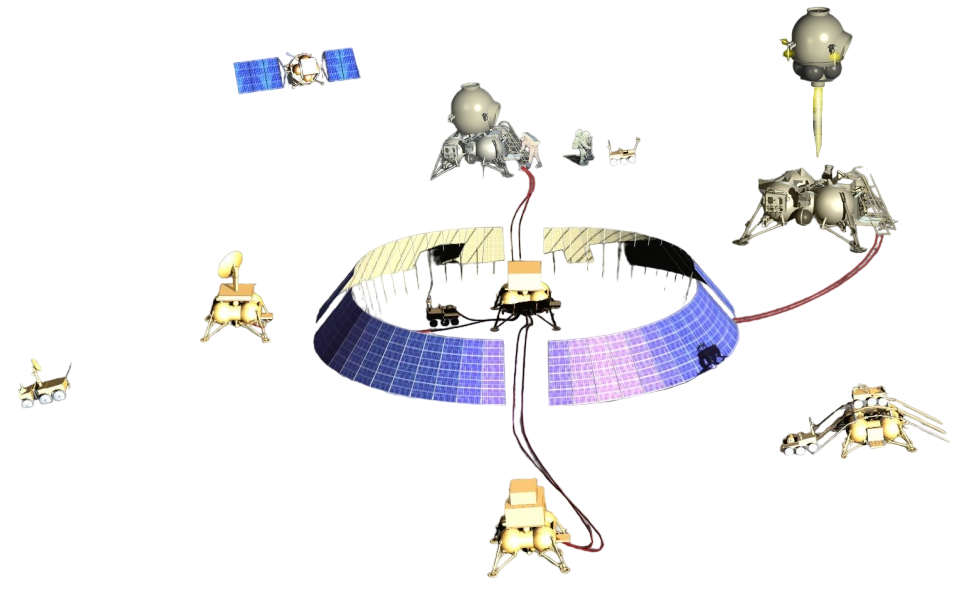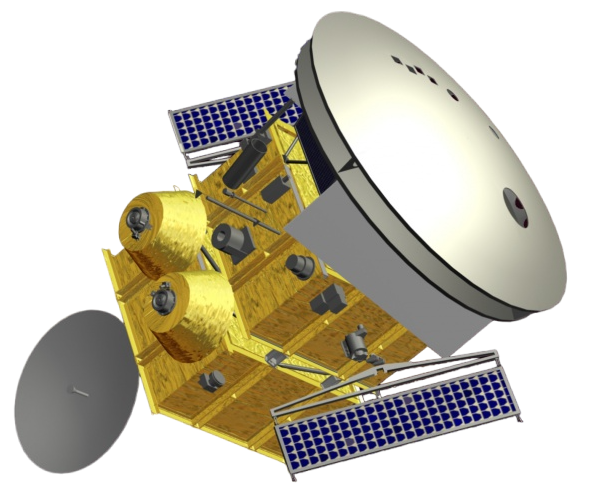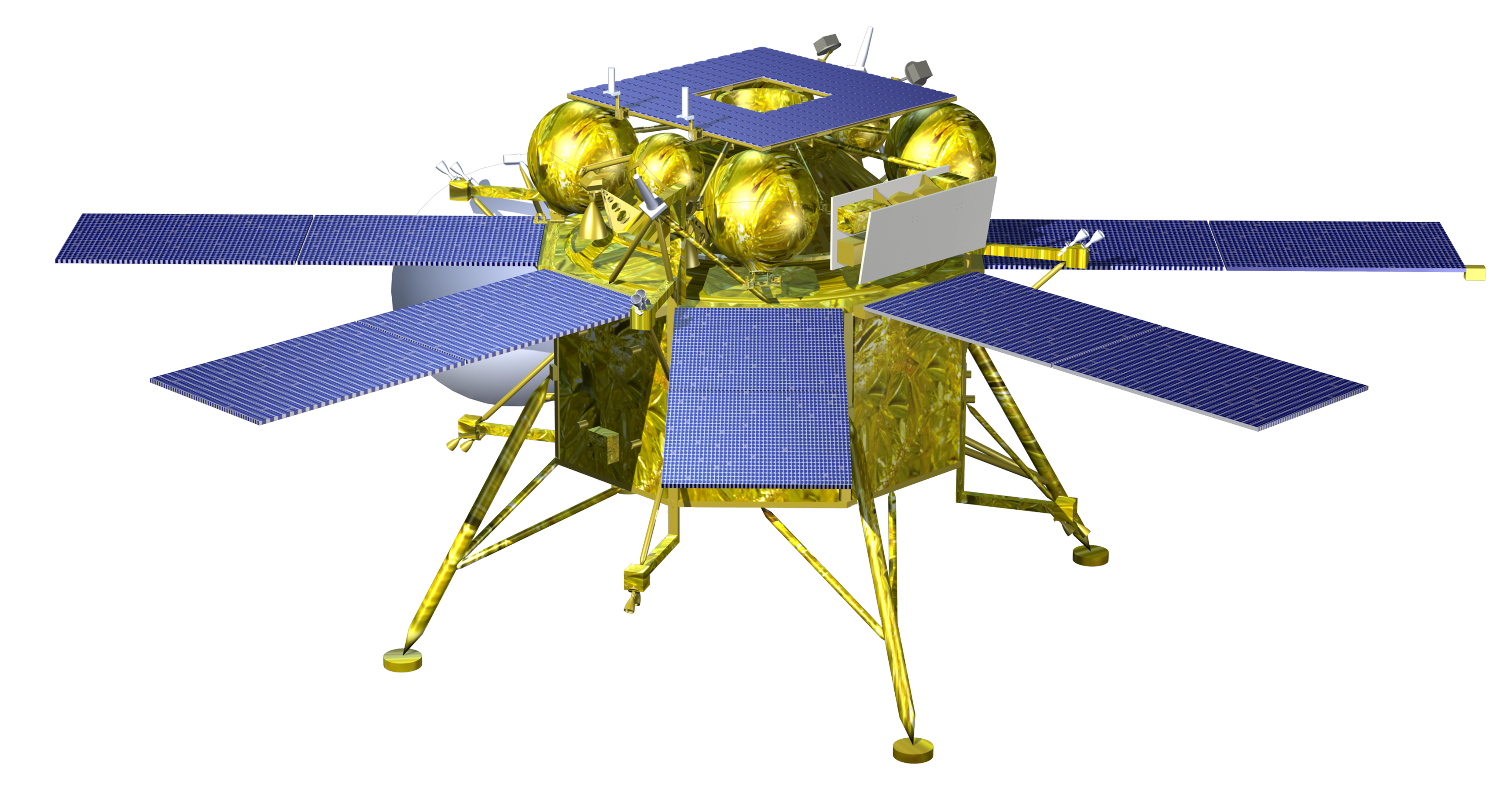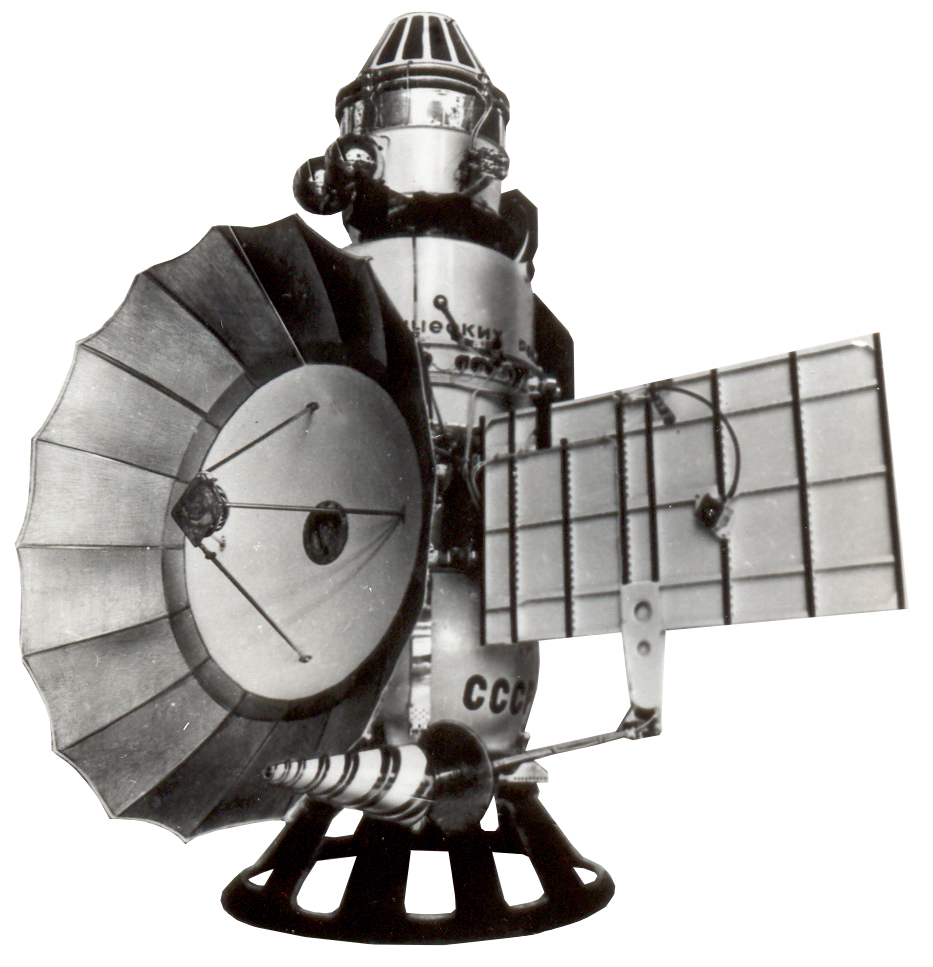
Characteristics
- Destination:
- planetary research
- Status:
- decommissioned
- Research Object:
- Venus
- Launch Date:
- August 17, 1970
- Spaceport:
- Baikonur
- Launchers:
- Molniya-M with NVL upper stage
- Machine Weight:
- 1180 kg; descent module mass: 500 kg
- Working Orbit:
- towards Venus
- Active Lifetime:
- 120 days
Description
The descent module of Venera-7 station was the first in the world spacecraft reached the Venus surface. The spacecraft performed landing on the night side of the planet.
Venera 7 was a further development of the Venera 4, Venera 5 and Venera 6 spacecrafts.
Following the results of flights performed by the Venera-5 and Venera-6 stations, which completed their
measurements at the altitude of about 20 kms above the mean surface level, there were performed the
calculations of the estimated pressure and temperature at the level of the mean surface of Venus, which
were equal to T = 500 ° C and P = 100 atmospheres. To design the descent module for the next
expedition to Venus the pressure and temperature were set at 150 atmospheres and 540°C accordingly.
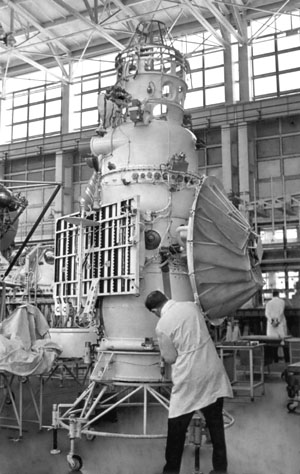 Unlike the previous expeditions, the main goal of the launch in the year of 1970 was to land on the
planet's surface. Therefore, the composition of the input data also included the wind speed near the
surface of Venus, which according to the calculations was equal to 1.5 m/s.
Unlike the previous expeditions, the main goal of the launch in the year of 1970 was to land on the
planet's surface. Therefore, the composition of the input data also included the wind speed near the
surface of Venus, which according to the calculations was equal to 1.5 m/s.
On the basis of the accepted conditions, there was designed a fundamentally new descent module. It had
to be stiff enough to withstand the pressure by 6 times exceeding the one calculated for the Venera-5 and
Venera-6 stations. At the same time, the requirements included the surface operation, i.e. under the
maximum pressure, with the duration of at least 30 minutes.
ЧIn order to make it completely resistant to such a pressure, the body of the descent module was made not
of the aluminum-magnesium alloy AMG 6, as in the previous Veneras, but of titanium, ensuring its
strength at a destructive external pressure of 180 atmospheres.
Thermal insulation of the lower hemisphere was made of the fiberglass, while the upper hemisphere - of
the glass wool, which filled the cells of glass honeycomb material. A shock-absorbing device was
installed to reduce the overloads affecting the spacecraft during the contact with the surface of the planet.
The high level of atmospheric pressure made it possible to replace the two-stage parachute system with
a single-stage one equipped with a corrugated cone-shaped parachute of 2.8 m². It was slightly bigger
than the area of the brake parachute dome made for Venera-4. The parachute was made of the Russian
material called Steklonitron. In order to provide the sufficient strength of the dome it was composed of the
4 layered fabric. The burnout of nitron provided the air permeability of the dome which guaranteed its
reliable operation. The systems of the parachute automated activation were changed accordingly.
The composition of the scientific payload was completely changed. In addition, a new radio altimeter was
installed to measure the altitudes in the range from 25 to 1 kms.
The changes in the scientific payload of the descent module and in the timelines of its operation, required
to increase the capacity of the battery. The cadmium-nickel battery was replaced with the lead-zinc one.
The battery was charged from the solar arrays by a command from Earth 15 days prior to the arrival to
Venus.
As the weight of the descent module increased by almost 100 kgs in comparison to that of Venus-5 and
6, the orbiter had to be lightened as much as possible. All the scientific equipment was removed from it
with the exception of the space particles counter KS 18 4M.
But even after that, the mass of the spacecraft composite (1180 kg) turned out to be 50 kgs heavier than
that of Venera-5 and 6. It meant that the mass exceeded the capabilities of the Molniya-M launcher. The
capacity of the launcher was increased by means of modifying the upper stage tanks (it was designated
NVL), which provided the possibility to add 140 more kgs of fuel.
